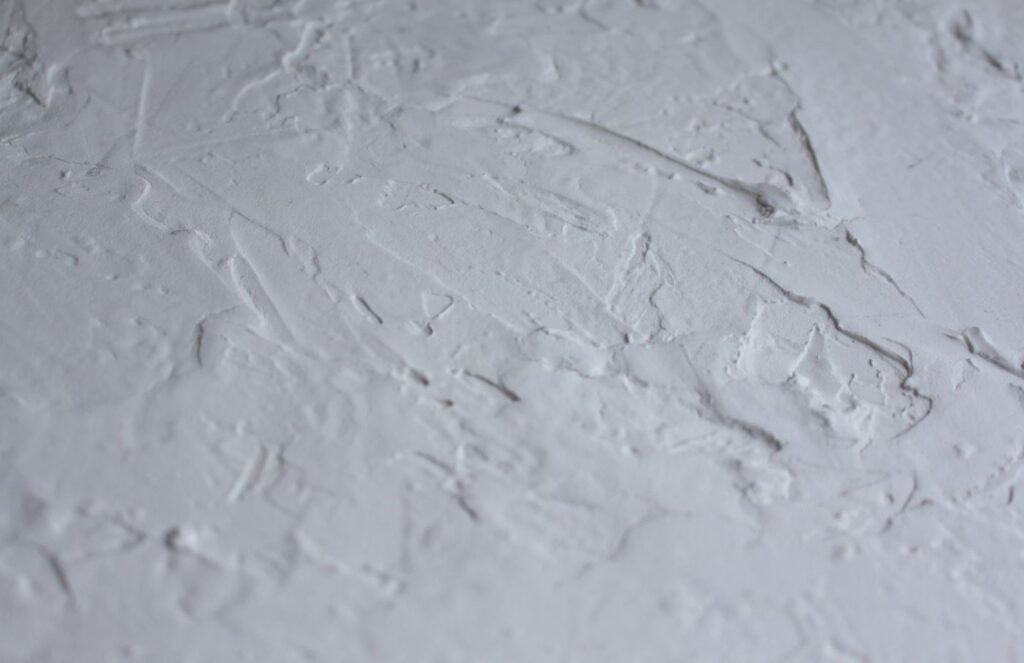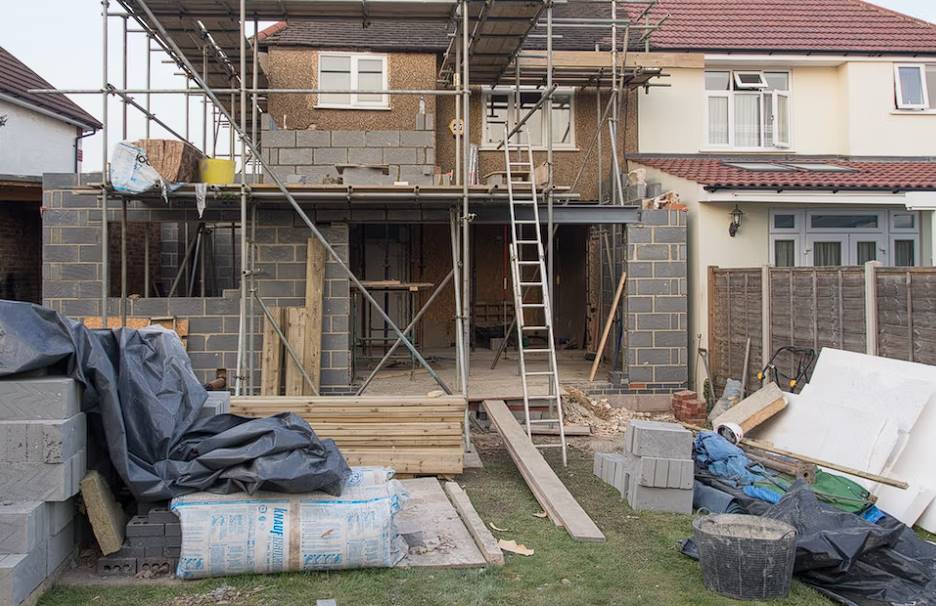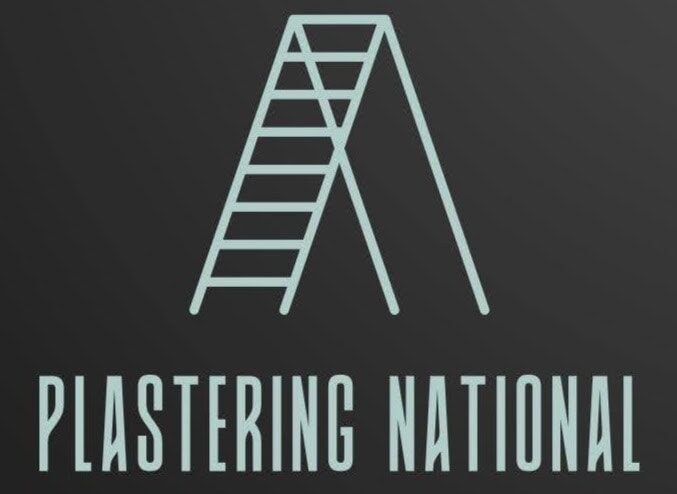There is a vast variety of residential plastering finishes available to improve the look and longevity of interior walls and ceilings. Smooth plaster is a popular choice because of the contemporary vibe it gives off. If you want your plaster to be perfectly smooth, you need to apply many coats and then sand them down. This finish works wonderfully with modern decor, whether you choose to paint it or keep it natural for a more minimalist look.
Textured plaster, which gives walls and ceilings an extra layer of visual interest, is another common plastering finish. A variety of methods exist for creating textured plaster, including the use of a textured trowel or roller and the addition of aggregates such as sand or pebbles to the plaster mixture. The use of textured textures can produce a wide spectrum of aesthetic effects, from rustic to industrial, and from subtle to striking. To further hide wall flaws, textured plaster is an excellent choice.
Another option is the luxurious Venetian plaster, which gives the impression of polished marble. Achieving the characteristic smooth and glossy finish of Venetian plaster requires layering the material thinly and then burnishing it. This finish is perfect for making a statement wall or focal point because of the air of refined elegance it imparts to any room. With regular cleaning and oiling, Venetian plaster can retain its lustre and beauty for decades.
What Are The Different Types Of Plasters?
As indicated before, various plaster varieties can be found in stores, each with its own set of uses. Let’s look at each separately and figure out which plaster is ideal for your project.
Lime Plaster vs Gypsum Plaster
A brief overview of the distinctions between older plasters and the more contemporary mixtures utilised today is in order before delving into the available plasters.
You’ll need a combination of lime, sand, and water to make lime plaster. You can add fibres like animal hair to make the mixture even stronger and make sure it binds well with the walls. It is breathable, which sets it apart from many contemporary cement plasters, and its usage dates back thousands of years.
Because of its ability to alleviate condensation and other damp problems, it is an excellent choice for historic houses.
Because of its flexibility, lime plaster can withstand building movement; moreover, its lovely, delicate appearance complements the character of older properties.
Conversely, gypsum plaster has surpassed all others in terms of widespread usage. It is typically mixed with hardeners and manufactured from gypsum that has been partially or fully dehydrated.
There may be better choices for historical restoration work due to its lower flexibility and lack of breathability compared to lime. Modern homes and extensions benefit greatly from its flawless surface, expert plasterers are easy to get by, and it dries much faster than lime.
There are a lot of variations in lime plaster, such as pre-mixed and one-coat formulae, making it difficult to determine an accurate cost. Similarly, the materials needed for each layer are different.
Browning Plaster
As a foundation for paint and other decorative activities, browning plaster is an ornamental plaster. It works well on surfaces with a high water absorption rate; otherwise, it’s comparable to bonding plaster. Expert plasterers utilise them as an undercoat before painting or decorating. Painting, beautiful mouldings, and decorations are all possible on this multipurpose basis.
Compared to bonding plaster, it may not be as adaptable, so it’s reserved for situations when a bit more “character” and texture are desired visually. You can colour browning plaster and adjust its absorbency (the amount of water it holds) to make it more or less useful, but you can’t use it alone.
Browning plaster is a great option for interiors for several reasons. That would be the first benefit since it is less expensive than competing plasters. If you are attempting to keep remodelling construction costs low, the money you save by doing it this manner can go towards other areas that need it.
Bonding Plaster
It is possible to use bonding plaster as an undercoat in the same way as browning plaster. Use bonding plaster on walls and other structural parts of your new or old house for a superb finish.
It’s the perfect wall plaster because it builds on the inherent strength of gypsum to create a structure that can endure extreme weather.
In particular, they are not constrained by the state of the wall. If you plan on applying bonding plaster to an already-existing wall, you should prime the surface with a wire brush or gritstone beforehand.
Because of its malleability and ease of application, bonding plaster can be easily shaped to fit any surface. It is easy to paint over once applied and dries fast. There will be no damage to the bonding plaster from any spills.
Thistle Plaster
The main ingredients in thistle plaster-lime and Portland cement-are evident in the name. You can’t make plaster without these two ingredients.
It’s just regular finish plaster that adheres well to walls and ceilings, and it works better on interiors than browning plaster. Any plastering work is only complete with this final layer. Thistle plaster is more durable than browning plaster when dried but not quite bonding plaster.
Unlike traditional plaster, this one cures when exposed to air. Use thistle or finish plasters to fix small holes, fissures, and gaps in walls, as well as to fix timber frames and laths (called “coffers”).
Its strength is well-known for thistle plaster. Even after enduring a lot of use, it will still look great. Chemical, acid, and fire vapours do not affect it at all. When looking for a finish plaster, it’s worth considering because of its other properties.
Carlite Plaster
It is common practice to use Carlite plaster on projects previously utilising different plaster types because it is among the best. A good example would be to apply a thistle and then use Carlite to hide backdrop flaws.
Additionally, carlite plaster is long-lasting and requires little maintenance. Carlite plaster is popular among amateur and expert interior decorators due to its user-friendliness and ease of installation.
Carlite sets much more slowly than thistle, one of the key differences between the two. The former takes over three hours while the latter barely takes two hours-a significant time difference. Because of this, thistle is preferred. However, car-lite is also reasonably durable. As a result, carlite is both impact and scratch-resistant.
Hardwall Plaster
Add water to the pre-mixed plaster and hard wall to achieve the desired consistency. It’s available as a dry powder that can be used immediately when mixed with water. It’s also available in a liquid version that has already been combined. The powder needs special handling to keep it free of impurities and moisture for its 12-month shelf life. Before using it, check that it is not blended with anything else; if you need clarification, ask your local provider.
When it comes to application, hardwall is similar to wallpapering; the only difference is that you glue it straight to the wall rather than onto the wallpaper. Remove debris from a freshly plastered wall by brushing it off, and then cover the entire surface with a thin layer of hardware. You can then apply a coat (or more) of ornamental plaster of your choice after this has dried.
Best Types of Plaster Finishes for Your Wall
Stucco Plaster Finish
One time-honoured method of plastering that has endured is stucco. The durability and resilience to the weather make it perfect for external or interior wall use. Stucco, which consists of water, sand, and cement, is placed in layers and must be dried and finished properly after each layer. You can get a polished look or add personality and character with stucco plastering, smooth, or textured finishes. Modern and industrial design can also incorporate stucco texture, typically seen in Spanish or Mediterranean-style structures.
Venetian Plaster Finish
The luxurious look of Venetian plaster is due to its Italian origins. This plaster finish is applied on interior and exterior walls using many thin layers of plaster, typically composed of lime or marble dust. A glossy, smooth surface resembling polished marble or stone is achieved by meticulously applying each layer. Because it may be coloured in various colours, Venetian plaster gives a broad range of design choices. It gives walls a more dimensional, rich, and textured look by increasing their depth perception. Venetian plaster is the way to go when a touch of class is desired in a commercial or residential space.
Sand-Faced Plaster Finish:
Many people choose to decorate outdoor surfaces with sand-faced plaster. A cement-sand mortar is spread over the surface to make the brickwork watertight. The unique sand-faced look is achieved by applying the second coat with a sponge that exposes the sand grains. Careful attention to detail is required to achieve a uniform distribution of sand and a high-quality sand-faced finish. You may customise the final look of sand-faced plaster by using different sand sizes and colours, allowing for unique and visually appealing designs. This is one of the advantages of the material.
Lime Plaster Finish
Lime plaster, a mixture of sand, water, and lime-especially non-hydraulic hydrated lime-is popular for new buildings and historic preservation due to its many advantageous properties. Notable among its attributes is its capacity to permit the passage of moisture vapour, thus avoiding the accumulation of trapped moisture within walls. This exceptional permeability aids in regulating humidity levels and reduces the likelihood of mould or mildew formation. Lime plaster is superb for environmentally conscious plastering in building and design projects because of its eco-friendly qualities, which encourage a sustainable and breathable atmosphere.
Gypsum Plaster Finish
Because of its many useful properties, gypsum-sometimes called plaster of Paris-has been a popular material in the building industry for many years. There are several gypsum plaster varieties, such as Carlite, Browning, Bonding, Hardwall, One-Coat, and Thistle. When applied to a smooth surface, gypsum plaster makes applying fine paints and wallpaper easy. Whether your front wall is smooth or textured, it will work. Plaster made from gypsum, a naturally occurring material, impacts the environment less than cement-based alternatives because of its low carbon footprint.
Cement Plaster Finish
Cement plaster, a common material for indoor and outdoor surfaces, combines sand, cement, and water. Because it can take a lot of wear and tear, it’s popular in heavily walked regions. Because of its resistance to various external factors, cement plaster guarantees a lasting surface. On top of that, it’s a budget-friendly choice compared to other ornamental treatments. You may rest easy knowing that your walls are more fireproof thanks to the natural fire resistance of cement plaster.
FAQs About Plastering
What Is Stucco, And How Is It Different From Traditional Plastering Finishes?
Stucco is a plaster made from cement, sand, and lime. It is applied in multiple layers and is commonly used for exterior surfaces but can also be used indoors for a textured finish.
What Factors Should I Consider When Choosing A Plastering Finish For My Home?
Consider factors such as the desired aesthetic, the level of maintenance required, durability, and the overall style of your home’s interior.
How Do I Maintain Plastering Finishes In My Home?
Regular dusting and occasional cleaning with a mild detergent and water solution can help maintain the appearance of plastering finishes. Avoid harsh cleaning agents that may damage the plaster surface.
Can Plastering Finishes Be Repaired If Damaged?
Yes, plastering finishes can be repaired by patching damaged areas with fresh plaster and blending the repair into the surrounding surface to maintain a seamless appearance.
Is It Possible To Change The Plastering Finish Of My Walls Or Ceilings After It Has Been Applied?
Yes, it is possible to change the plastering finish of your walls or ceilings by either applying a new layer of plaster with a different finish or by covering the existing plaster with a different material, such as drywall or wallpaper. However, it may require professional assistance to ensure a smooth and successful transition.
Choosing the Right Type of Plaster
Keep these things in mind while you search for the ideal plaster for your job:
Understand Your Needs
Before you choose plaster, make sure you know what you need. There should be a clear delineation between outdoor and indoor use. Plasters are designed for different surfaces; some are lighter and more suited to flat surfaces, while others are heavier and better suited to uneven surfaces. Choose the right one for your unique needs.
Examine the Surface
Think about if the surface is new or old while you examine it. Think about how smooth or rough the texture is. Pay attention to any imperfections or fissures that you find. Choosing the right plaster type is important according to the surface’s condition to get the best possible adhesion and plastering results.
Analyse the Environment
It is crucial to consider the exact environmental conditions the plaster will be exposed to while selecting. To avoid problems caused by excessive moisture, for example, choose a moisture-resistant plaster in a humid zone. The same holds for locations that experience extreme weather: you might need an external plaster with strong weatherproofing properties to keep the elements out for good. Consideration of environmental factors aids in selecting a plaster that is both appropriate and long-lasting for the job.
Calculate Drying Time
The plaster’s drying and curing times must be considered when determining the drying time. The typical drying time for plaster is two hours, with a further hour needed for complete curing or hardening. It is possible to speed up the drying time by adding many coats of plaster.
Conclusion
Residential plastering finishes are important for building and home design because they protect, look good, and work well. There are different kinds of plasters, and each one is used for different things. Lime plaster, which is made of lime, sand, and water, lets air pass through and is good for old houses because it can stop buildup and damp issues. While gypsum plaster is less common and has been used for historical repair work because it doesn’t bend or breathe as easily, it is more common.
This is browning plaster, a decorative plaster that works well on surfaces that soak up a lot of water and is used as a base coat before painting or decorating. Plus, it costs less than bonding plaster and can be used as a base coat on walls and other house structures. Bonding plaster uses the natural strength of gypsum to make buildings that can stand up to harsh weather.
Thistle plaster is a regular finish plaster that sticks well to walls and ceilings and works better on the inside than browning plaster. It is made from lime and Portland cement. If you let it dry, it lasts longer than browning plaster but not as long as bonding plaster. Carlite plaster is popular with both new and experienced interior designers because it is simple to use and set up.
home plastering finishes give you many choices for your interior design projects. Lime plaster is the most popular choice because it lasts long, can be used in many ways, and is easy to apply.
Hardwall plaster is a type of wall plaster that is similar to wallpapering but is put up in a different way. It goes right on the wall and can be put up with a thin layer of hardware. Some types of plaster finishes are stucco, which lasts for a long time and doesn’t get damaged by the weather, Venetian plaster, which looks expensive and is made from lime or marble dust, sand-faced plaster, lime plaster, gypsum plaster, and cement plaster.
People like stucco plaster because it lasts a long time and doesn’t break easily. Venetian plaster, on the other hand, is a fancy finish that makes walls look shiny and smooth. For outdoor areas, sand-faced plaster is used. Lime plaster is popular because it can control humidity and stop mould and mildew from growing. Gypsum plaster, which is also called “plaster of Paris,” is used a lot in construction because it doesn’t leave behind much pollution.
Sand, cement, and water are mixed together to make cement plaster, which is often used for indoor and outdoor areas. It’s good for areas that get a lot of foot traffic and doesn’t catch fire. When picking the right plaster, you should think about what you need, look at the surface, think about the surroundings, and figure out how long it will take to dry. Usually, plaster needs two hours to dry, and then it needs another hour to cure or harden.
To sum up, picking the right plaster relies on your needs, the condition of the surface, the environment, and the results you want. You can find the right plaster for your job by knowing what you need, looking at the surface, and thinking about how long it will take to dry.
Content Summary
- Plaster is crucial in building and architecture for its protective, aesthetic, and functional qualities.
- Choosing the right type of plaster is essential for the durability and appearance of interior design projects.
- Various types of plaster are available, each suited for different applications.
- Lime plaster, made from lime, sand, and water, is breathable and ideal for historic buildings.
- Gypsum plaster, made from partially or fully dehydrated gypsum, is popular for its smooth finish and fast drying time.
- Lime plaster is flexible and complements the character of older properties, while gypsum plaster is more suited for modern homes.
- Browning plaster serves as a decorative base for paint and other finishes.
- Bonding plaster can be used as an undercoat on various wall types.
- Thistle plaster, made from lime and Portland cement, is a standard finish plaster for walls and ceilings.
- Carlite plaster is used to cover imperfections and is known for its ease of use.
- Hardwall plaster, a pre-mixed dry powder, is applied directly to walls.
- Stucco plaster finish is durable and weather-resistant, suitable for both exterior and interior walls.
- Venetian plaster finish offers a luxurious look, mimicking polished marble or stone.
- Sand-faced plaster finish is preferred for outdoor surfaces, providing a unique texture.
- Lime plaster finish allows walls to breathe, reducing moisture buildup.
- Gypsum plaster finish is versatile for smooth or textured walls and has a low environmental impact.
- The cement plaster finish is durable, making it ideal for high-traffic areas.
- Understanding your specific needs is crucial when selecting the right plaster.
- Consider the surface condition, whether new or old, and its texture.
- Analyse the environment to choose a plaster resistant to moisture or extreme weather.
- Consider the drying and curing times of the plaster for project scheduling.
- Lime plaster is traditionally used but requires skill and knowledge for application.
- Gypsum plaster’s popularity stems from its quick drying time and ease of application.
- Browning plaster is cost-effective and provides a versatile base for further decoration.
- Bonding plaster’s adaptability makes it suitable for both new and existing walls.
- Thistle plaster is known for its durability and ability to fix small holes and gaps.
- Carlite plaster’s slow setting time allows for adjustments during application.
- Hardwall plaster requires careful storage to remain free from impurities.
- Stucco can achieve both polished and textured finishes for a variety of design styles.
- Venetian plaster adds depth and texture to walls, enhancing their aesthetic appeal.
- Sand-faced plaster’s customisation options allow for unique design outcomes.
- Lime plaster’s environmental benefits make it a sustainable choice for eco-conscious projects.
- Gypsum plaster’s easy application makes it a go-to for smooth finishes.
- Cement plaster’s affordability and fire resistance add to its appeal.
- The choice of plaster should align with the project’s specific requirements and aesthetic goals.
- Surface preparation is key to achieving optimal adhesion and finishing results with any plaster.
- Environmental considerations should guide the selection of plaster for outdoor projects.
- The drying time of plaster impacts project timelines and should be accounted for in planning.
- Browning and bonding plasters serve as foundational layers for further decorative work.
- Carlite and thistle plasters offer solutions for covering imperfections and achieving a final finish.
- Hardwall plaster’s direct application method simplifies the plastering process.
- Stucco, Venetian, sand-faced, lime, gypsum, and cement plasters offer a range of finishes for different looks.
- Choosing the right plaster involves balancing functionality, aesthetics, and environmental considerations.
- Proper care and storage of plaster materials ensure their effectiveness and longevity.
- The historical or architectural significance of a building may dictate the type of plaster used.
- Modern advancements in plaster formulations offer improved performance and application ease.
- The skill level of the plasterer can influence the choice of plaster and the quality of the finish.
- Budget considerations play a role in plaster selection, with some types offering more cost-effective solutions.
- The versatility of plaster as a building material allows for creative and functional interior and exterior designs.
- With the right knowledge and materials, plaster can enhance the durability, beauty, and functionality of any space.



